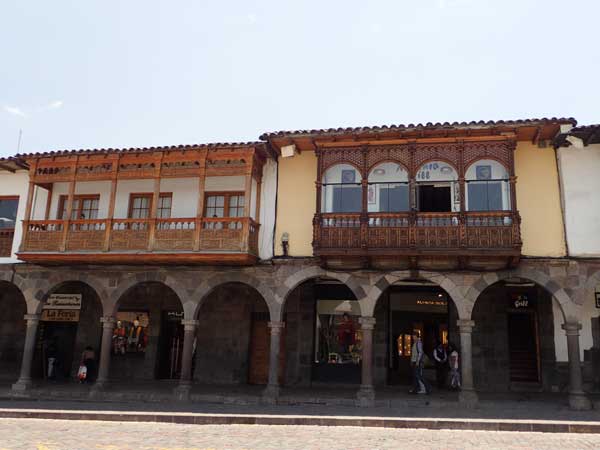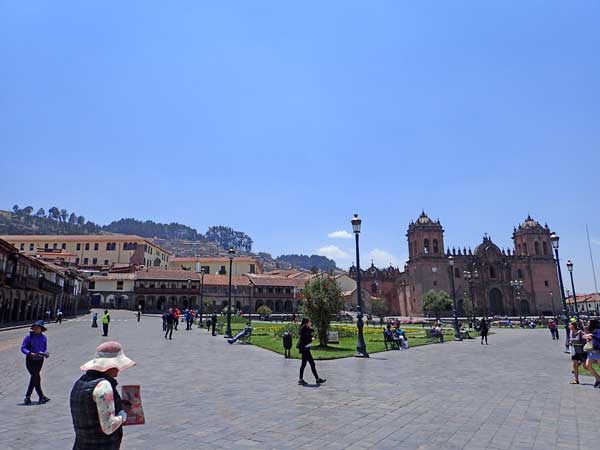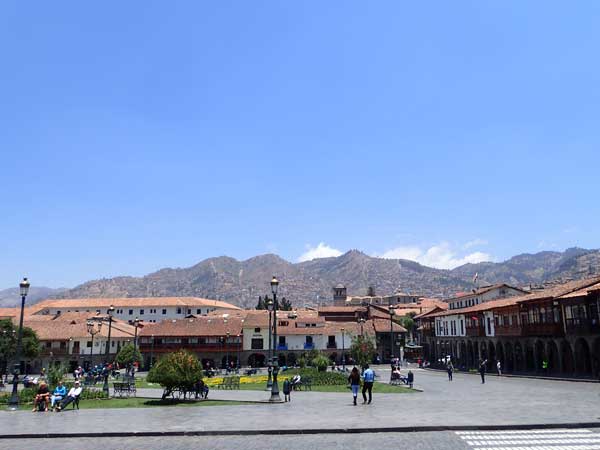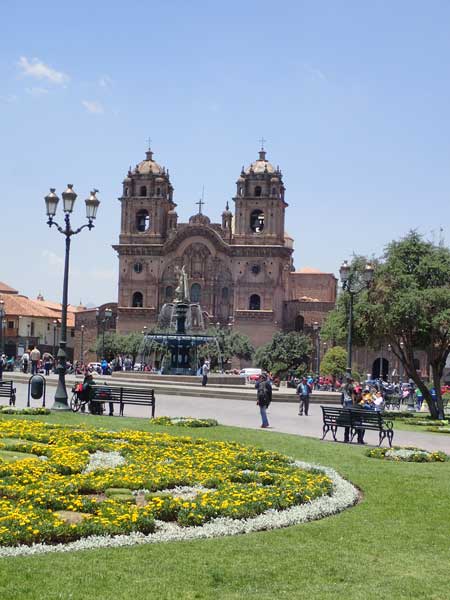To Cusco!

Caramor - sailing around the world
Franco Ferrero / Kath Mcnulty
Wed 27 Sep 2017 01:26
13:31S 71:59.04W What strikes me when travelling in Peru is that most houses are unfinished, that any roadside wall is covered in someone's electoral campaign and that women everywhere are knitting, in the fields, at the traffic lights or behind stalls selling snacks.  A typical unfinished building 'decorated' with a political campaign slogan Our coach from Puno to Cusco was with the reputable company 'Cruz del Sur' and Nagore had warned us that it was more like catching a plane than a bus; you have to check your luggage in beforehand and go through a metal detector. In fact it was worse than that: we were filmed waiting in line, our hand luggage was searched, then we were filmed again once on the bus but at least the it left on time. We were puzzled, why all these 'security' measures? It was a daytime bus and most of the passengers were tourists. We wondered if it was a precaution left over from the days of the 'Shining Path', the pseudo-Maoist organisation which wreaked terror in the Peruvian countryside for 19 years. The road followed the shores of Lake Titicaca north-west. At some point the lake must have been much larger as the water gave way to a wide open plain. Road signs promised a forthcoming 'motorway to Cusco' and although some work had been carried out, nothing more seemed to be happening. Franco and I were seated upstairs, not far from the stairwell. A small English voice came from downstairs: "Help, help!" I assumed someone was locked in the toilet and couldn't get out so I headed down to assist. White acrid smoke was billowing out from the bathroom and passengers downstairs were starting to panic. This particular bus had no connecting door to the driver's cabin but my now extensive experience of South American buses had taught me where to knock. Another switched on passenger located the fire extinguisher and we put the fire out before the bus had come to a standstill. Meanwhile Franco was controlling the mob upstairs that was about to stampede. All safely out and onto the hard-shoulder, the stewardess (who hadn't done anything to help) burst into tears. I consoled her and assured her it wasn't her fault. She'd thought she was going to die. The driver and his assistant were bewildered as to what had started the fire. We had our suspicions when a French passenger lit a cigarette. A coach load of foreign passengers carrying all their possessions, stranded by the roadside in the middle of nowhere would have been a choice target for robbers or Maoist terrorists but nobody came other than a stray dog that barked at us half-heartedly.  Stranded Before coming to Peru, I believed that woman dressed in large skirts and bowler hats only to sell knickknacks to tourists. In Chucuito I realised I was wrong, all women wore large skirts and bowler hats all the time. Surely Cusco (meaning 'the navel' in Quechua), the heartland of Inca history, would be the same, so I was a little disappointed when we arrived in a large modern city where girls and boys wore torn jeans and office workers high heels and suits. The outskirts are grim, miles and miles of unfinished buildings, but the historical centre is beautiful; Inca walls topped with intrinsically carved Hispanic wooden balconies.  Beautiful wooden balconies  Daniel, our walking tour guide in front of an Inca wall in Cusco  Main square  Main square with Cusco suburbs in the background  The main church constructed by the Spanish |